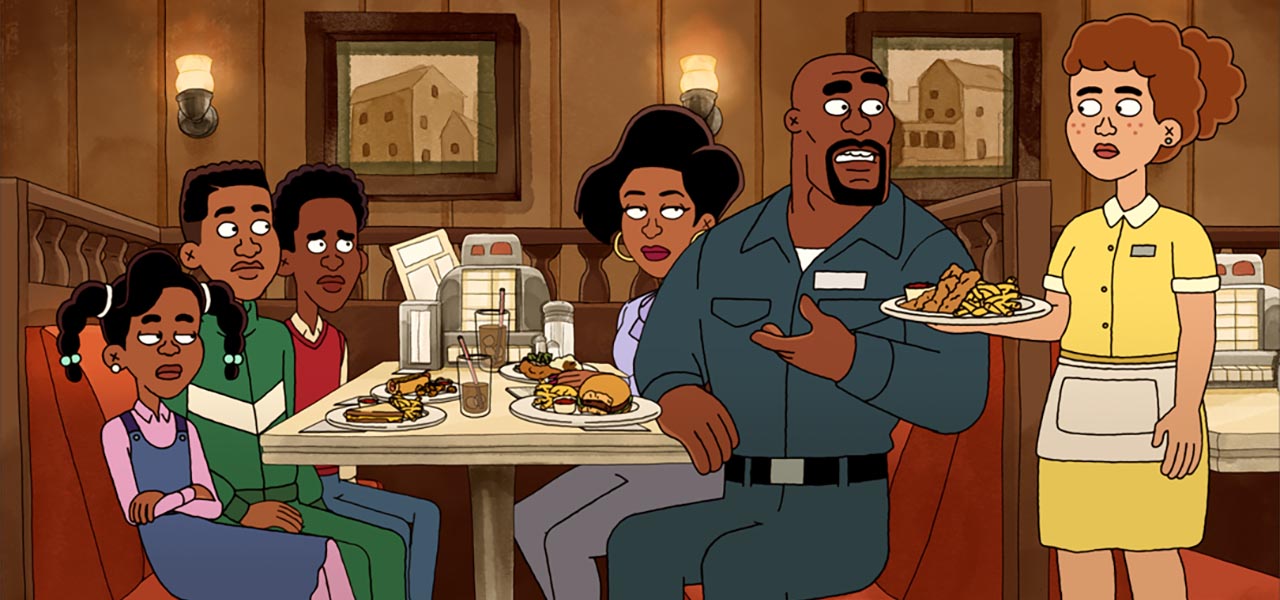
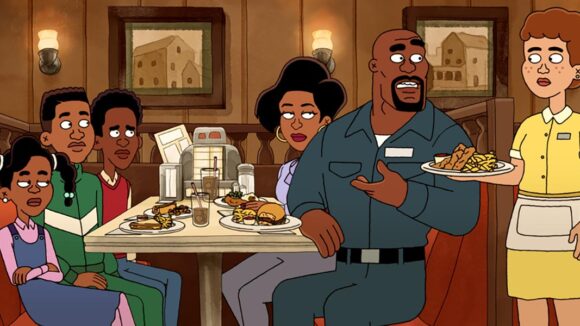
Q&A: ‘Everybody Still Hates Chris’ Showrunner Digs Into Why The New Series Needed To Be Animated
In our current entertainment landscape chock full of reboots, revivals and reimaginings of successful IP, the one thing you don’t often see is a live-action series returning as an animated series.
But look no further than the current television unicorn, Comedy Central’s animated series Everybody Still Hates Chris which debuted this week. This iteration of the series continues to mine the plethora of stories about the formative years of comedian/actor Chris Rock in Bed–Stuy, Brooklyn.
This new medium revival, executive produced by Rock and showrun by Sanjay Shah (co-showrunner/executive producer, Central Park), picks up right where The CW series, Everybody Hates Chris, left off 15 years ago.
It’s 1987 and young Chris is still trying to navigate his eccentric family, along with the perils of attending a middle-class, primarily white high school across town. If you’re asking how that’s possible with the passage of time, the magic of animation helpfully erases the conundrum of the original, live-action child actors, like Tyler James Williams (who voiced young Chris), growing up. New young actors now voice Chris and his siblings, while Rock is back to narrate with actors Terry Crews and Tichina Arnold returning as parents Julius and Rochelle, respectively.
Curious about the nuts and bolts of reviving a series in another medium, the creative choices that distinguish it, and how to carry through a show’s tone after almost two decades, Cartoon Brew got on a Zoom with Shah to get his assessment.
Cartoon Brew: You’ve worked on both live action and animated sitcoms, so how did this project in particular land on your desk?
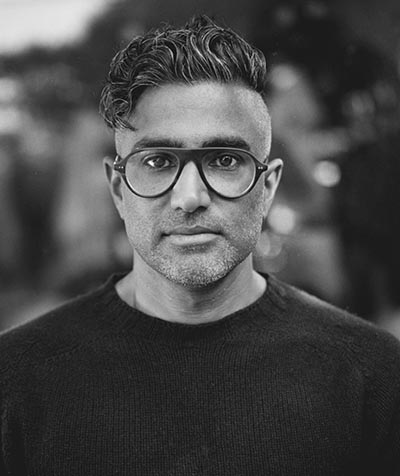
Sanjay Shah: I was working with Mike Jones and Pete Docter on [the upcoming Pixar Inside Out spinoff series] Dream Productions, and I got a call from my agent saying, “Hey, are you interested in doing a reboot of Everybody Hates Chris, and you get to meet Chris Rock?” I came into this through stand-up. And actually, I specifically pursued stand-up after seeing Chris do [the stand-up special] Bring the Pain. I loved Bring the Pain so much that I wrote an episode of Fresh Off the Boat called “Bring the Pain” about that character seeing Bring the Pain for the first time. So I’m not just saying I was a fan. It was truly a full circle moment. But I said no, because I assumed he wanted to do live action. As a fan, I’m not interested in doing a prequel, a postquel, or whatever the term is….
But then he was like, “Chris wants to do it animated.” And I thought, “Oh, that’s interesting.” Then I started thinking about things and it was worth a conversation. I met him and I had a take about how I would do it and how we would get to animation. That’s all fun and just sort of the window dressing, but the why of the animation was really an important part of the conversation.
What was your ‘why’ to make it worthwhile to invest your time?
Shah: Having just worked on two projects at Pixar, and getting to see their approach to building out a world and specifically, I got to see a lot of the concept art for Soul. And so the conversation [for Rock] became, “Okay, but why are we doing this as an animated show?” And it was for a variety of reasons. We can expand the world. The 88 episodes of the original show established so many amazing characters, but because of the limitations of a live-action budget, and specifically at those two networks, we didn’t get to explore those characters in the way that maybe The Simpsons might. So that was a huge opportunity to go into the backstory on some of the more beloved moments, like, why did Julius mistake Pam’s butt for his wife? I wonder if there’s a funny story there?
But then also to get to be expressive with emotion in a way that is new. We wanted this show to feel fresh and unique, not just because it was animated. But because of why we were using animation. I’m such a fan of ’80s cartoons, and knowing that it was sort of like a wasteland at the time, according to all my artist friends, because budgets were being cut. But still, some of the greatest shows came out of that so this is a little bit of a love letter to ’80s animation. Even for the style, I wanted it to be an elevated ’80s cartoon. I wanted it to look a little bit ’80s, but then just pushed a little bit more.
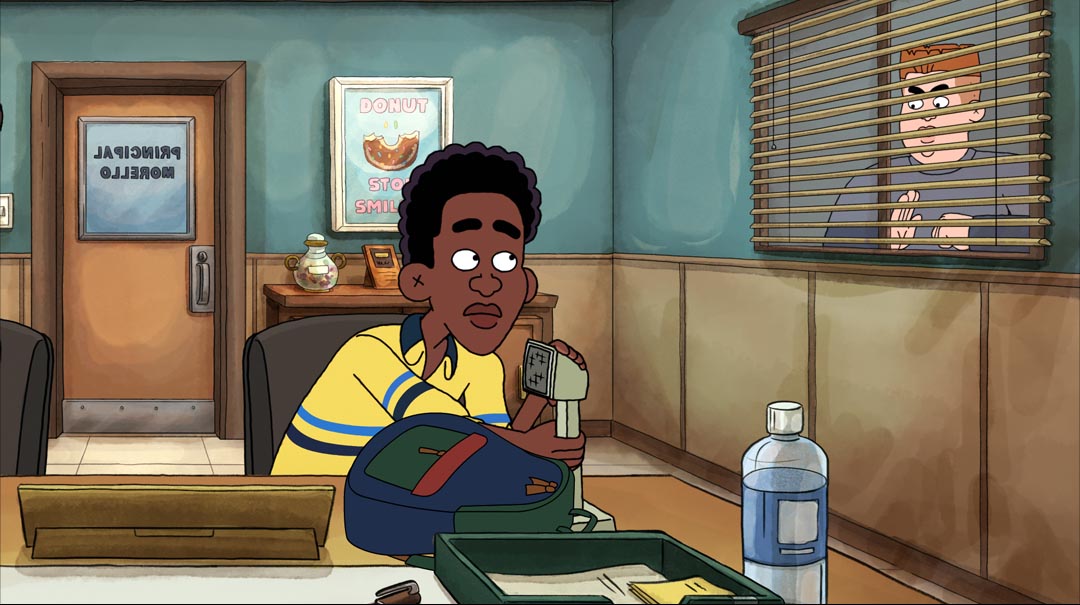
Did Rock have a lot of unused stories that he didn’t get to use in the live-action series?
Shah: There’s so many stories that he has not told yet. One story in particular he told me when we first met — which has become a moment in the show — is just this startling experience he had going to a grocery store in Queens as a child. I don’t want to give away too many spoilers but it’s one of these moments where, especially as a person of color myself, you just think, how did that happen in of all places, New York City? It’s just sort of the absurdity of the world but this is something that really happened to him. Because it’s absurd, it has the chance to be edgy, but also lead to a family story with a warm ending. Also to show gritty realism in a way that might be more off putting in live action than in this animation. He has a ton of stories like that.
I really see myself in a lot of Chris’s experiences, especially in school, which is why I love the original series so much. I really connected with what that must have felt like. I can’t fully connect with what it was to be in New York but I know what it’s like to be the only minority at my school in the ’80s and ’90s. To see my son now, who’s the “only” at his school, watch this show, he’s now seeing it through young Chris’s eyes. And when I watch the show again, I now see it through Julius and Rochelle’s eyes.
Speaking of the maybe darker content in some stories, how do you create a tone that bridges a grounded live-action show through to a fully-animated show that is a medium meant for you to take creative liberties?
Shah: One benefit we had from the original going into this tone, was there was already a heightened world that we were living in in the original. It was realism. But certainly towards season three and season four, they were really pushing what they were doing in the fantasy moments. Some of my favorite moments are in season three and four, because of that. And so that gave us a little bit of room so that it didn’t feel jarring.
As we were transitioning in, I think what we were really feeling out first was what are the rules when we are in the grounded realism of our world? What are actually the rules? Where can we take a little license that we’re animated, and where can we not without destroying a fine line between fantasy and realism? We were playing with that over the season. How do we want to use animation? How does it make sense to use animation?
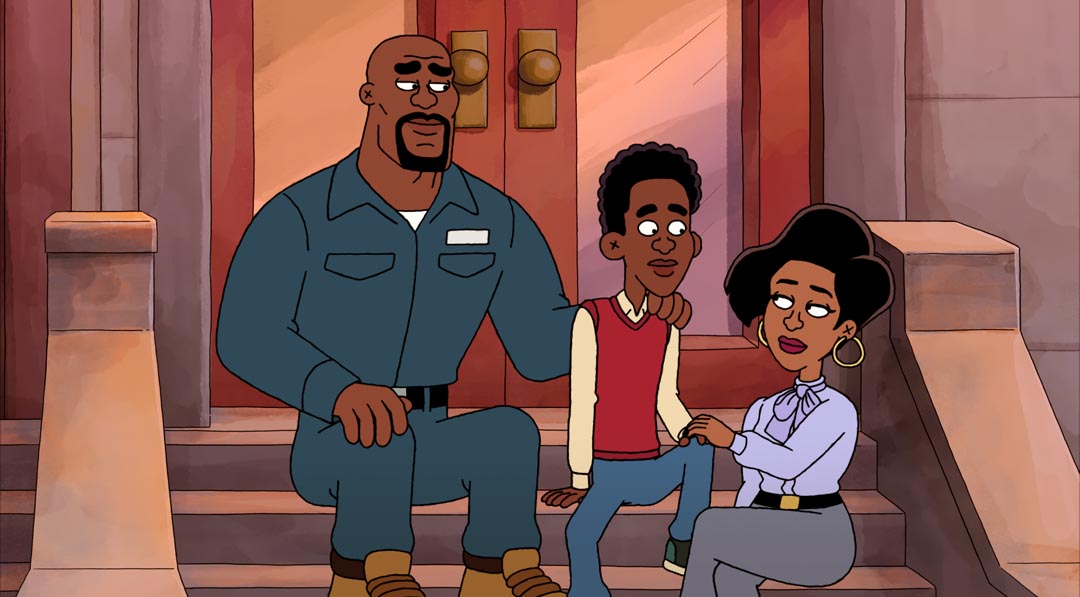
In the first episode, you open with live action-footage from the original series and then use a Rochelle smacking of Chris sound effect to crash us into the animated world of this series. How did that come to be the right way to cross over?
Shah: It was born of an early conversation about this show. Me and some writers were talking about, how do we do this? So many ideas came up, and this was the best idea. It’s on brand for the show. Rochelle was constantly whacking Chris. I hope OG fans of the show are just so pleased that it’s totally within the language of the show, and literally, the whole reason the show is animated is because Rochelle has been doing this stuff to Chris for four seasons. And this is the most absurd version of it.
We were always thinking about new audiences too. And wanting to bring them in and make them feel like they didn’t miss anything. Even with some of the setup, I did the amount of setup I did in the pilot so that new audience members wouldn’t feel like this wasn’t made for me to watch. And I don’t think people will feel that way. So it wasn’t just fan service. We do love the show and we wanted it to just be totally connected to the original. I told Chris this from the beginning. I said, “My dream is somebody is watching the live-action show and they’re going right into the animated version, and it feels seamless.” That would be my dream, if we could accomplish that.
Explain the aesthetic of the show. What were you going for art wise and character design wise?
Shah: One of the things I nerded out on was what did New York really look like at this time? We went through archival photos and through interviews of people. We tried to bring 1987 alive. Only a few people who really knew Bed-Stuy at this time might respond, but it was worth it to me. I learned this at other shows, like with every cut that came in, the attitude was never rest on your laurels. It was how to make it better. We went on field trips to see Basquiat or a Keith Haring exhibit because they were both very active in Brooklyn at this time, and some of their design language is incorporated within our characters. Like the X’s in the ears. Some of the shape language for the bodies and the faces are versions of what Basquiat did with faces. We were really trying to do all of these things not just because it’s cool, but because it gave it, hopefully, a more unique look and that there’s a story behind it.
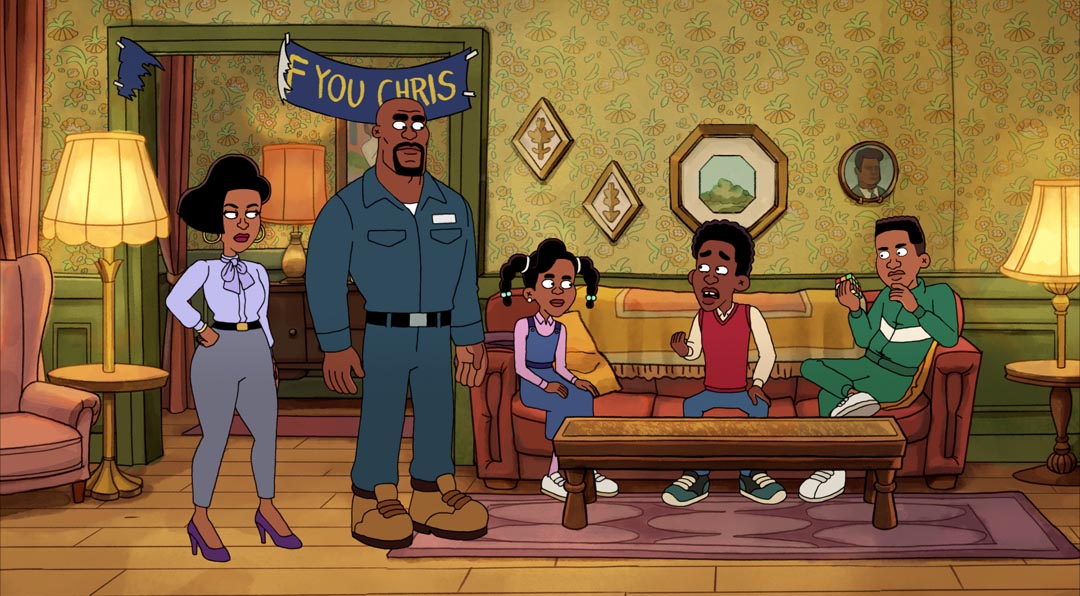
When it came down to choosing the right animation studio partner, what were your priorities?
Shah: The first seasons of animated shows are so hard so it was to make sure the designs were working, that they were not breaking in animation, that you’re connecting with the characters, that we could make minor changes as we go, so that we’re connecting visually with the characters, and that the writers had enough time to write to the changes, right? One of the things that I always disliked when I first came into the animated world was this divide between writers and production. I just didn’t understand it, right? And when I got to Pixar, I was like, “Oh, they get it.” There’s a real collaboration between writers and artists. Together, you’re making something better. A writer’s mind is different from an artist’s mind, and vice versa. And so from day one with the writers, I said, “We’re going to have open communication. A good idea can come from anywhere. An artist has a pitch for a gag, I want to hear it. A writer has a pitch for something visual, I want to hear it.” I wanted time to figure that out, and to have more weeks in writing the first few episodes.
Also, by the way, I knew a writers’ strike was coming. I was very clear with all the studios saying, “I’m going to be moving fast because I don’t know if they’re going to bring the show back after the strike.” I certainly wanted to give us a fighting chance by putting our very best work forward and I needed time to do that. And so that’s how I ended up narrowing it down to two [studios] and then ultimately going with Titmouse for a variety of reasons.
Having completed 20 episodes of this series, do you recommend this as a creative path for more reboots or revivals?
Shah: I don’t think every live-action show can be turned into an animated show. I think you have to come up with a lot of boxes for why, and they all must be checked. I really think that there needs to be an argument there, and the people behind it really need to love animation. We’re doing animation a disservice when it’s like, “Oh, we’ll just do it animated…just because we can.” A lot of the people I hired they’ve worked on Harley Quinn, they’ve worked on American Dad. Another person was a Simpsons writer. All of these people, myself included, bring a real love for animation so that it doesn’t just feel like they did it to do something cool, right? You have to know the language of animation and care about it.
This interview has been edited for length and clarity.

